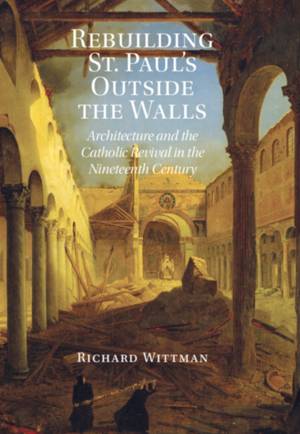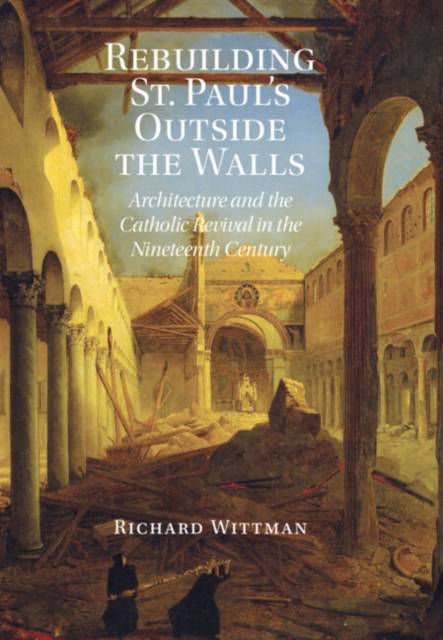
Door een staking bij bpost kan je online bestelling op dit moment iets langer onderweg zijn dan voorzien. Dringend iets nodig? Onze winkels ontvangen jou met open armen!
- Afhalen na 1 uur in een winkel met voorraad
- Gratis thuislevering in België vanaf € 30
- Ruim aanbod met 7 miljoen producten
Door een staking bij bpost kan je online bestelling op dit moment iets langer onderweg zijn dan voorzien. Dringend iets nodig? Onze winkels ontvangen jou met open armen!
- Afhalen na 1 uur in een winkel met voorraad
- Gratis thuislevering in België vanaf € 30
- Ruim aanbod met 7 miljoen producten
Zoeken
Rebuilding St. Paul's Outside the Walls
Architecture and the Catholic Revival in the 19th Century
Richard Wittman
Hardcover | Engels
€ 187,45
+ 374 punten
Omschrijving
In 1823, the fourth-century basilica of St. Paul's Outside the Walls in Rome was destroyed by a catastrophic fire, prompting debate as to whether, and in what style, it should be reconstructed. Two years later, Pope Leo XII made the unprecedented decision to rebuild St. Paul's as an exact replica of its predecessor, which resulted in the most expensive construction project in Rome since the early modern rebuilding of St. Peter's. In this study, Richard Wittman traces this reconstruction within the context of the Church's struggle to adapt to a radically changed and changing world. He offers new perspectives on European architectural modernity and its negotiations with the past, and problematizes received ideas about the sources and significance of architectural historicism. Proposing a new prehistory of the great Catholic revival after 1850, Wittman's study demonstrates the key role that religions motivations played in the formation of modern mentalities, and particularly the historicist component.
Specificaties
Betrokkenen
- Auteur(s):
- Uitgeverij:
Inhoud
- Aantal bladzijden:
- 448
- Taal:
- Engels
Eigenschappen
- Productcode (EAN):
- 9781009414524
- Verschijningsdatum:
- 18/04/2024
- Uitvoering:
- Hardcover
- Formaat:
- Genaaid
- Afmetingen:
- 173 mm x 249 mm
- Gewicht:
- 1179 g

Alleen bij Standaard Boekhandel
+ 374 punten op je klantenkaart van Standaard Boekhandel
Beoordelingen
We publiceren alleen reviews die voldoen aan de voorwaarden voor reviews. Bekijk onze voorwaarden voor reviews.











